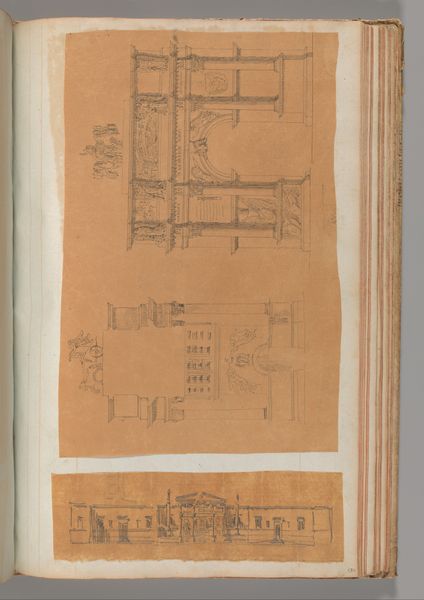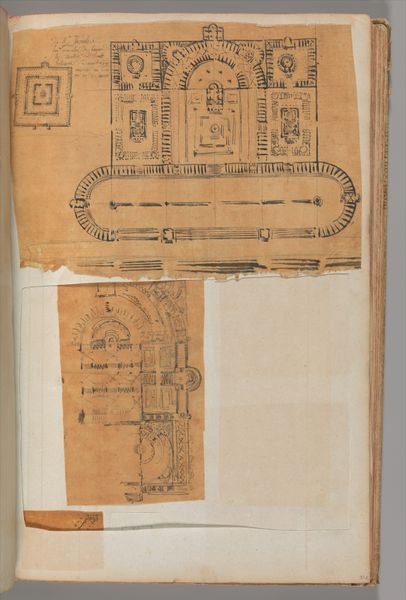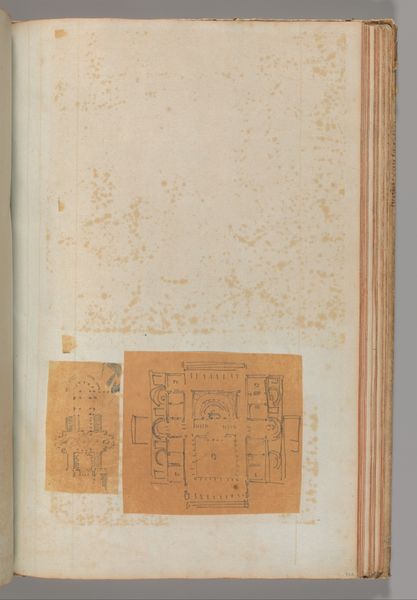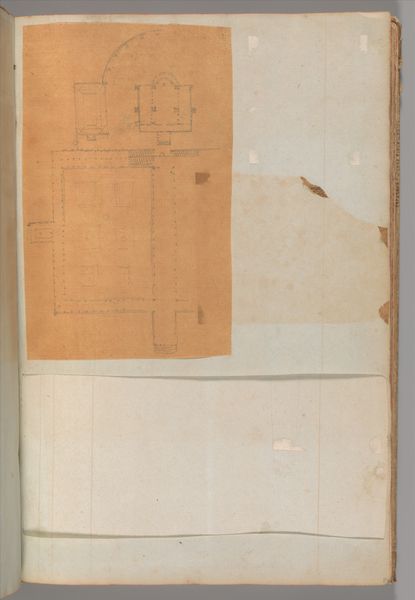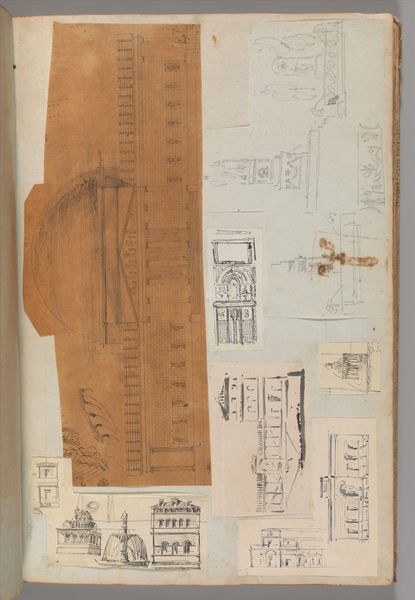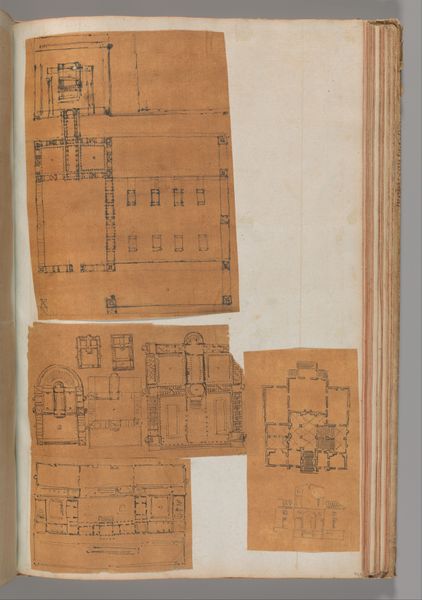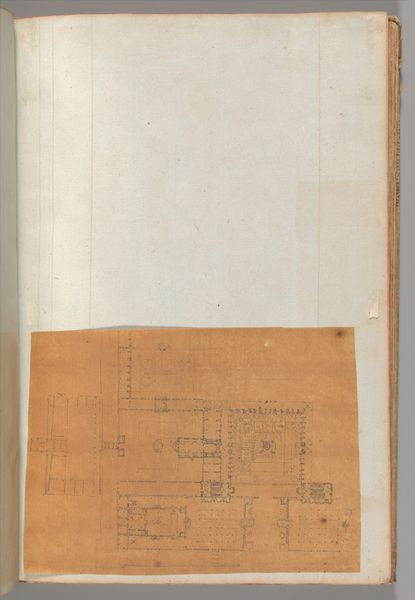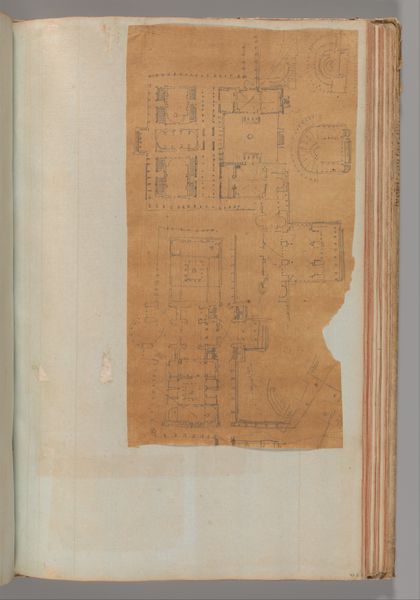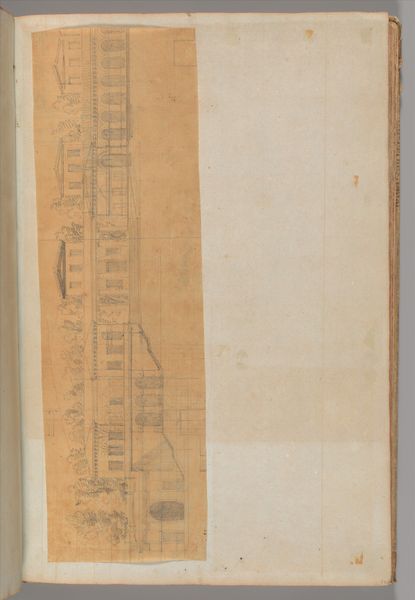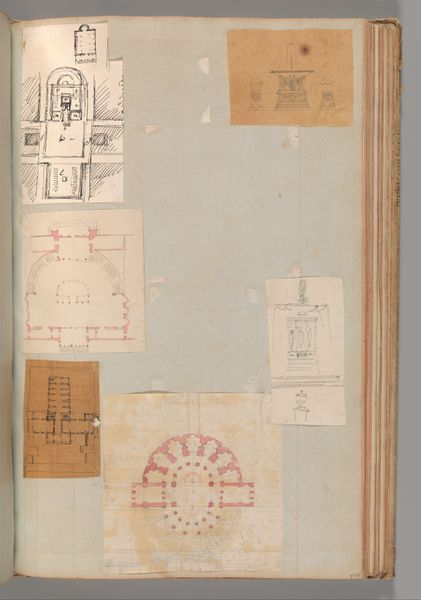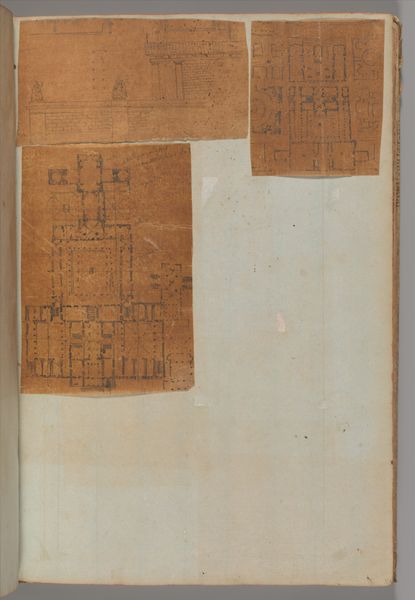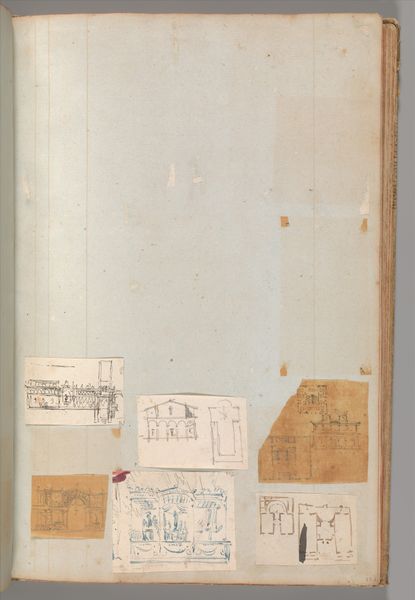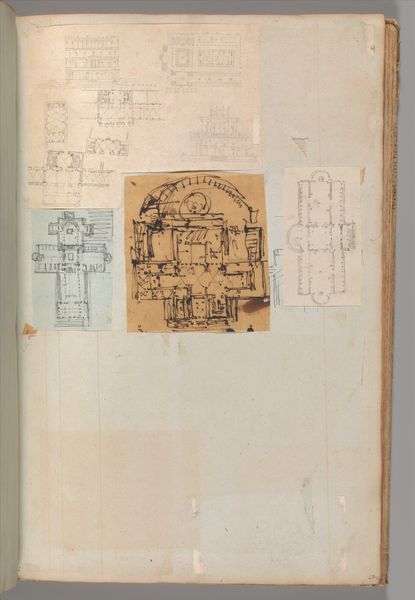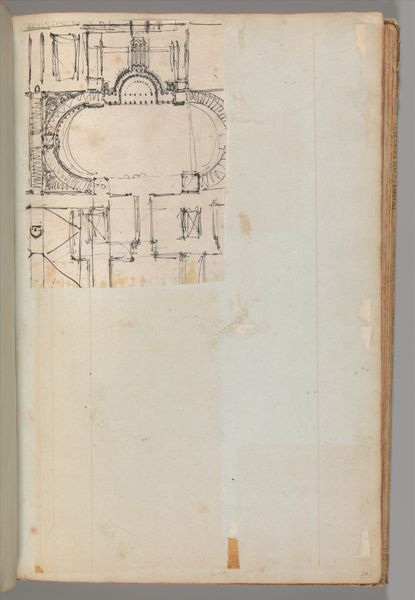
Page from a Scrapbook containing Drawings and Several Prints of Architecture, Interiors, Furniture and Other Objects 1795 - 1805
0:00
0:00
drawing, print, paper, ink, architecture
#
drawing
#
neoclacissism
# print
#
paper
#
ink
#
architecture
Dimensions: 15 11/16 x 10 in. (39.8 x 25.4 cm)
Copyright: Public Domain
Curator: Let’s take a look at a page from a scrapbook by Charles Percier, made between 1795 and 1805. It contains drawings and prints related to architecture, interiors, furniture and other objects. The page itself is a patchwork of ideas rendered in ink on paper. Editor: My initial reaction is one of intimacy; it feels almost like a private sketchbook, the kind of place where ideas gestate, full of fragmentary but fascinating architectural motifs. The sepia tones and fragile edges of the paper add to this sense of quiet study. Curator: Absolutely. Notice how these fragments—several prints carefully pasted, juxtaposed with hand-drawn sketches—become evidence of a design process deeply rooted in the culture of collecting and reusing existing materials. These scraps tell a story about the means of artistic production. Editor: Precisely, and those details point towards something significant. See how the neoclassical motifs—the arches, the columns—evoke Roman grandeur. The repeated use of these architectural elements signifies a conscious connection with an idealized past, a visual vocabulary intended to imbue authority and permanence. It also shows a distinct cultural interest that has been renewed over time. Curator: Indeed, and this revival was central to neoclassicism as a cultural force, but consider the physical labor required to produce each individual print, to create and replicate these designs. Each line on this page shows not just artistic vision, but painstaking material practice and craft. It gives an invaluable window onto design manufacture. Editor: Yes, it is an amazing document! These drawings are visual keys, unlocking a much deeper history of Neoclassical aesthetics, which allows us to reflect on the revival, reinterpretation, and transmission of classical values over centuries. The image resonates beyond its medium. Curator: The juxtaposition of drawing and print raises further questions. Did the act of physically collaging influence design changes, or inspire further concepts? Looking through such historical artworks allows an interesting point to discuss the development of different cultures, while thinking through a practical artistic process. Editor: Seeing these images, even just sketches, truly reminds you of how classical forms have endured—resonating across epochs, embedded deeply within our cultural memory, to be still appreciated centuries later. Curator: Very true. Thinking through the materials and design involved here offers a glimpse into historical making and thinking.
Comments
No comments
Be the first to comment and join the conversation on the ultimate creative platform.
